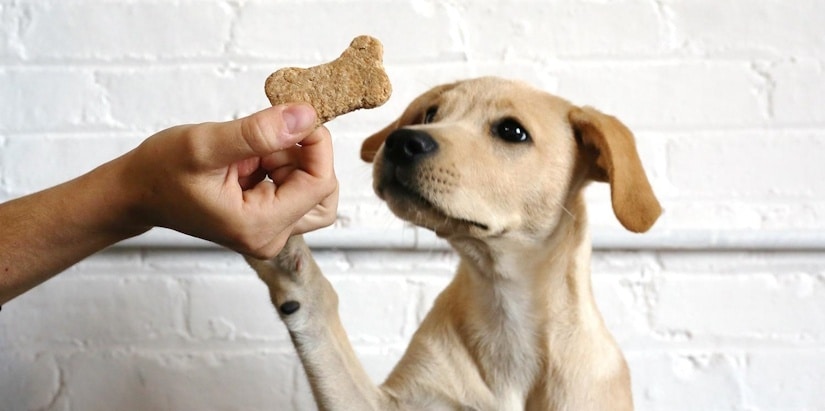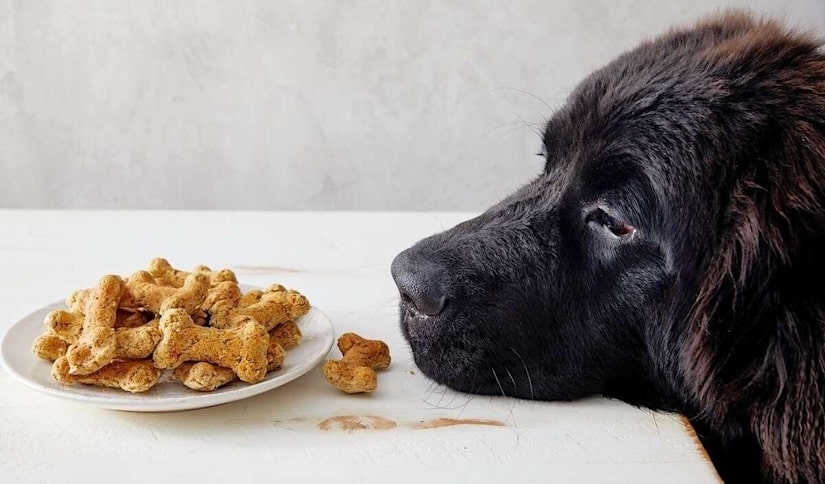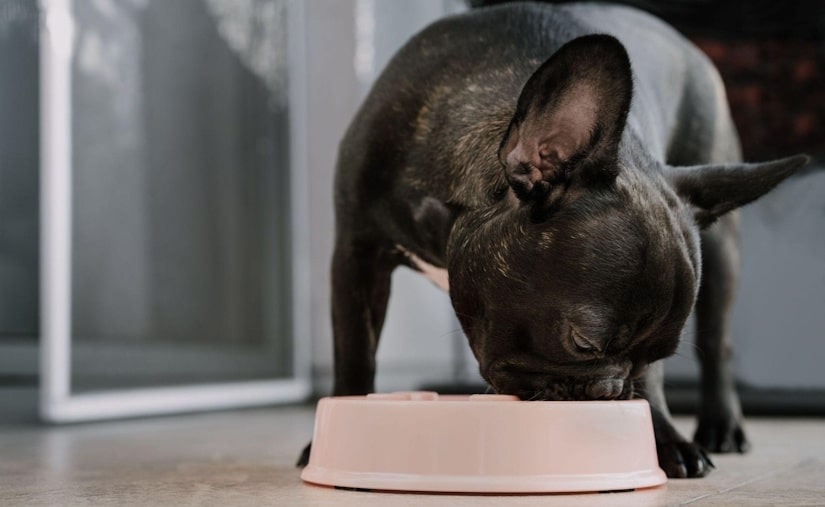If you have a dog, you may have noticed that he seems to love treats more than his regular meals. He may even skip his kibble or wet food in favor of a tasty snack. But why is that?
And is it healthy for your dog to eat more treats than regular food? In this blog article, we will explore the reasons behind your dog’s preference for treats, the pros and cons of giving treats to your dog, and how to balance treats and regular meals for your dog’s health and happiness.
How to Identify if Your Dog Is a Treat Lover
Some dogs are more interested in treats than others. You can tell if your dog is a treat lover by observing his behavior when you offer him different types of food. A treat lover will:

- Show more excitement and enthusiasm when you give him a treat than when you give him his regular food
- Ignore or leave his regular food untouched if he knows there are treats available
- Beg, whine, or paw at you for more treats after he finishes his portion
- Steal or scavenge for treats from other sources, such as the trash, the counter, or other dogs’ bowls
If your dog exhibits these signs, he may be a treat lover. But before you assume that he just has a sweet tooth, you should know that there are other factors that influence his preference for treats.
The Science Behind Dogs’ Preference for Treats
Dogs have fewer taste buds than humans, but they can still identify sweet, sour, salty, and bitter tastes. They also have special taste buds for water, which may make water more appealing to them than to us.
Dogs evolved to eat meat, which naturally contains enough salt to satisfy their body’s need for it. Therefore, they don’t have a strong taste for salt compared to humans. However, they do have a strong preference for meat over other foods, as well as warm, moist foods over cold, dry foods.
Treats are usually made with meat or meat by-products, and they are often soft, chewy, or moist. They also contain other ingredients that enhance their flavor and aroma, such as sugar, fat, cheese, peanut butter, or bacon.

These ingredients stimulate your dog’s reward center in his brain, which makes him feel happy and satisfied. Treats also provide variety to your dog’s diet, which can prevent boredom and increase his appetite.
However, not all dogs prefer treats over regular meals. Some dogs may prefer praise or petting over food, depending on their personality and their relationship with their owner.
A study by Emory University found that dogs who had a strong response in their brain’s reward center to praise were more likely to choose their owner over food in a maze experiment.
On the other hand, dogs who had a weaker response to praise were more likely to choose food over their owner.
“Many people swear that their dogs prefer praise and petting to treats, and others are just as certain that food wins out every time with their dogs. Perhaps the most important lesson from this study is that individual variation in preferences is huge.” – Karen B.
The Pros and Cons of Giving Treats to Your Dog
“Too many treats will interfere with your dog’s appetite for his regular food. This can contribute to a nutritional imbalance in the long term, and can turn him into a fussy eater”,says Krista Williams, BSc, VCA Hospitals.
Treats can be beneficial for your dog in many ways. They can:
- Help you train your dog by rewarding him for good behavior
- Strengthen your bond with your dog by showing him affection and appreciation
- Enrich your dog’s life by providing him with mental stimulation and fun
- Improve your dog’s dental health by cleaning his teeth and gums
- Supplement your dog’s nutrition by providing him with extra vitamins, minerals, or antioxidants

However, treats can also have some drawbacks for your dog. They can:
- Cause obesity and related health problems if given in excess or instead of regular meals
- Lead to picky eating or food refusal if your dog becomes too dependent on treats
- Trigger allergies or intolerances if your dog is sensitive to certain ingredients in the treats
- Cause digestive upset or choking if your dog eats too many treats at once or swallows them without chewing
- Contain harmful substances or contaminants if the treats are low-quality or expired
Therefore, it is important to choose the right treats for your dog and give them in moderation.
How to Balance Treats and Regular Meals for Your Dog’s Health and Happiness
To ensure that your dog enjoys both treats and regular meals without compromising his health and happiness, you should follow these tips:
- Choose high-quality treats that are made with natural ingredients and suitable for your dog’s age, size, and dietary needs. Avoid treats that contain artificial colors, flavors, preservatives, or fillers.
- Limit the amount of treats you give to your dog to no more than 10% of his daily calorie intake. For example, if your dog needs 500 calories per day, he should not get more than 50 calories from treats. You can check the calorie content of the treats on the label or online.
- Vary the types of treats you give to your dog to prevent boredom and keep him interested in his regular food. You can also use different methods of giving treats, such as hiding them in toys, puzzles, or games.
- Use treats as a reward for good behavior, not as a bribe or a substitute for regular meals. Don’t give treats to your dog when he begs, whines, or paws at you. Instead, give treats to your dog when he follows your commands, learns a new skill, or does something positive.
- Monitor your dog’s weight and body condition regularly and adjust his food intake accordingly. If your dog is overweight or obese, you may need to reduce the amount of treats or regular food you give him. If your dog is underweight or malnourished, you may need to increase the amount of regular food you give him.
- Consult your veterinarian if you have any questions or concerns about your dog’s diet, health, or behavior. Your veterinarian can help you determine the best type and amount of treats and regular food for your dog based on his individual needs.
Conclusion
Treats are more than just food for your dog. They are a way to communicate with them, to reward them, to teach them, and to love them. By understanding why your dog prefers treats over regular meals, how treats can affect your dog’s diet and health, and how you can use treats effectively to train and bond with your dog, you can make the most of this wonderful tool and enrich your relationship with your furry friend.
